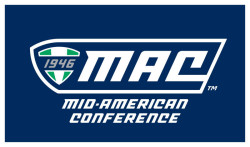Things are about to get a little bit tougher for Conference USA:
Old Dominion and the other 13 Conference USA schools apparently will have to make do with about $500,000 less in television revenue next season.
League TV revenue is likely to fall by about half when new contracts with Fox Sports and the CBS Sports Network take effect July 1, according to sources at three schools familiar with C-USA’s TV contract negotiations.
The two networks paid the league more than $14 million per year – about $1.17 million per school – for the past six years. Although the new contracts haven’t been finalized, negotiations are nearing completion, sources said.

C*USA is based mostly on of the southeast and used to include members such as Louisville and Houston, but now has UTSA and Middle Tennessee. They lose programs to the AAC, and restock from the Sun Belt.
What has, thus far, prevented conferences from losing TV money, has been a combination of bringing new schools on board with comparable value and the general escalation of college sports TV contracts. The Mountain West Conference, for instance, was coming off a contract in which their product had been seriously undervalued long-term contract. Conference USA previously had replaced the five losses with six solid additions. In each case, they probably would have made even more had they not been pilfered, but the difference was not enough to negatively effect their bottom line.
There were some indications that this might be coming down the pike. Conference USA had been the marquee product for CBS Sports Network, but since the last realignment the network seems to have been uninterested in showing their games above and beyond their contractual requirements. The Liberty Bowl, the home of Conference USA’s champion since the inception of the conference in 1996, dropped them (though it looked like that might have happened anyway). Rice started flirting with the MWC, despite the closest team to them in that conference being almost 1,000 miles away. And Marshall, which I will get to below.
So what changed for Conference USA? That’s an important question because of what it means for the other conferences.

The WAC was the original home of BYU and Arizona State. They lost most of their members to the MWC and a few to C*USA, until eventually there were only two teams left. They no longer sponsor football.

The Big East was a football-basketball hybrid conference that fell apart, giving birth to another Big East that doesn’t sponsor football and the AAC.

The Sun Belt, yet another southern conference, gave their best to Conference USA, but their best just wasn’t good enough. They exist mostly as a ticket to the FBS.
The main reason for their low ranking was Marshall’s lackluster schedule. What’s less clear is what aspect of their scheduling was hurting them. If it was their out-of-conference scheduling, that’s one thing because in the future they could try to schedule better opponents. But if it was their conference schedule, that’s not going to change any time soon and that is a burden shared by everyone in their conference, which bodes ill for all of them. If it requires more than two extra wins to get that NY6 slot than a rival in the Mountain West Conference (which, for reference sake, makes $1.7m per year per team), or presumably the American Athletic Conference (which makes $2.1m/yr/team), that would mean that they are virtually shut out not only of the playoffs, but a major bowl game. That makes it harder for the networks to get people to watch. In fact, that there are two conferences below them in the pecking order would mean that there are only two semi-relevant G5 conferences left.
Notably, the Mid-American Conference, theoretically one level below Conference USA in the pecking order, signed a TV deal with ESPN just last year worth roughly the same amount as Conference USA’s contract (a very significant upgrade from their previous contract, which was almost as bad as the Sun Belt’s). That suggests there may no longer be separation between Conference USA and the MAC, and the only separation that matters is between the the top two of the G5 and the remaining three and that TV deals are about to be flattened to reflect this. It also means that if they lose any more programs, they won’t be able to grab any MAC schools like Northern Illinois or Toledo (both of which are allegedly looking to move).Or it could be a sign of very tough things to come not just for Conference USA, but for all of the G5 and perhaps even the P5 conferences as well. It may be the leading indicator that the bubble is bursting, and the spigot is coming off. Which, in turn, would mean that even though they have not yet faced any defections, when it comes time to renegotiate the American Athletic Conference and Mountain West Conference may be in for a rude surprise. The same could even be true of the ACC and Big 12. It is at least plausible that these gigantic TV contracts are a result of a cable model that is imploding around them. If that’s the case, that could spell trouble for almost everybody.

The American Athletic Conference, the successor to Big East Football, has more founding members of C*USA than C*USA does.
About the Author
please enter your email address on this page.



